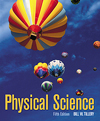Many materials used today are relatively new, created in the last few decades.
These new materials are the result of modern chemical research, produced and
manufactured through controlled chemical reactions. The new materials include
synthetic fibers, from nylon to polyesters, and plastics, from polyethylene
to Teflon. They also include water-based paints and super adhesives used in
construction. The manufactured materials are lighter, stronger, and have special
properties not found in natural materials. Today, such synthetic materials are
used extensively in buildings, clothing, automobiles, and airplanes. The packaging,
preserving, and marketing of many convenience foods are also made possible by
the products of chemical research, as are manufactured vitamins and drugs that
help keep you healthy. From synthetic fibers to synthetic drugs, there are millions
of products today that are the direct result of chemical research. The countless numbers of new products resulting from chemical research
demonstrate understandings about matter and how it is put together. These understandings
start with the most basic unit of matter, the atom. Perhaps you have wondered
how incredibly tiny atoms were discovered and how they can be studied. Atoms
are so tiny that they are invisible to any optical device. Even more incredible
is the study of the innermost parts of these invisible atoms and the development
of knowledge of how they are put together. You will soon know the answer to
questions about how atoms were discovered and studied (Figure 9.1). This chapter
contains the essence of the fascinating story of how the atomic concept was
discovered and developed. The development of the modern atomic model illustrates how modern scientific
understanding comes from many different fields of study. For example, you will
learn how studies of electricity led to the discovery that atoms have subatomic
parts called electrons. The discovery of radioactivity led to the discovery
of more parts, a central nucleus that contains protons and neutrons. Information
from the absorption and emission of light was used to construct a model of how
these parts are put together, a model resembling a miniature solar system with
electrons circling the nucleus. The solar system model had initial, but limited,
success and was inconsistent with other understandings about matter and energy.
Modifications of this model were attempted, but none solved the problems. Then
the discovery of wave properties of matter led to an entirely new model of the
atom. The atomic model will be put to use in later chapters to explain the countless
varieties of matter and the changes that matter undergoes. In addition, you
will learn how these changes can be manipulated to make new materials, from
drugs to ceramics. In short, you will learn how understanding the atom and all
the changes it undergoes not only touches your life directly but shapes and
affects all parts of civilization. |



 2002 McGraw-Hill Higher Education
2002 McGraw-Hill Higher Education

 2002 McGraw-Hill Higher Education
2002 McGraw-Hill Higher Education